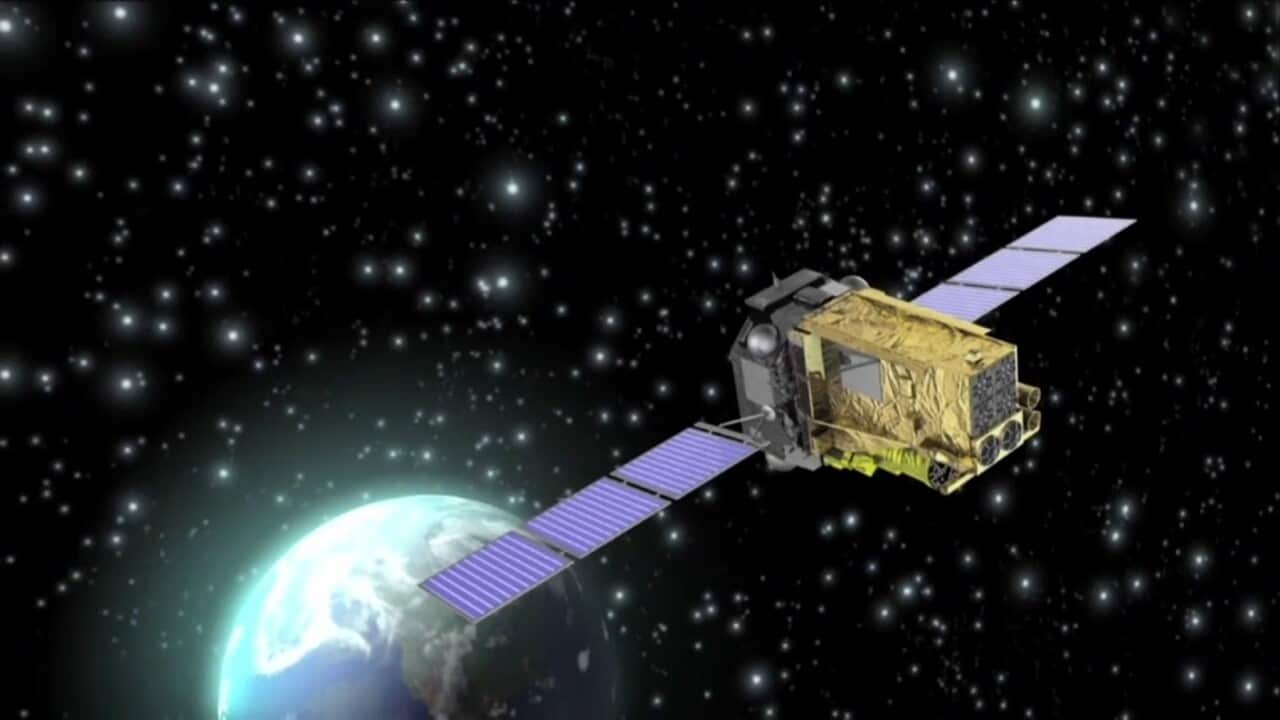Italian
Con gran parte dell'Europa in isolamento per prevenire la diffusione del COVID-19, l'Agenzia Spaziale Europea (ESA) ha continuato a operare le sue navicelle spaziali.
Dall'inizio di marzo, la maggior parte del personale dell'agenzia che svolgeva il proprio lavoro nel centro operativo spaziale di Darmstadt, in Germania, lavora da casa.
Ogni sala di controllo delle missioni è ora limitata ad una o due persone e la pianificazione e il monitoraggio delle 21 navicelle spaziali dell'ESA avviene ora da casa.
Una di queste navicelle, facente parte della missione BepiColombo, è in viaggio verso il pianeta Mercurio.
Tuttavia, in aprile ha dovuto eseguire una manovra critica per regolare la sua velocità e la sua traiettoria.
La responsabile delle operazioni Elsa Montagnon afferma che controllare una navicella spaziale da casa è stata un'esperienza nuova:
"It's a strange feeling to be preparing commands in my little office here at home, I never thought I would ever do that."
La Montagnon afferma come, nonostante la stranezza di gestire una navicella spaziale da casa, sia andato tutto liscio.
"We had to get used to work differently, to coordinate differently among the team members, this had some overhead, for sure. But overall, I have to say, we have also been supported by a very stable spacecraft, the trajectory was so stable that we didn't have to do trajectory correction manoeuvres beyond the one we did on the 26th February. After that we didn't have to do any more, and the platform itself was also very well behaved and this helps a lot in these conditions, of course."
Non tutte le squadre sono state così fortunate nell'avere una navicella spaziale cooperativa.
Dal 2002, la Missione Internazionale di Astrofisica a Raggi Gamma dell'Agenzia Spaziale Europea - nota come "Integral" in breve - osserva violente esplosioni cosmiche, come esplosioni di raggi gamma.
Ma il 13 aprile, i sistemi di alimentazione della navicella spaziale si sono improvvisamente risettati - forse a causa degli effetti di un raggio cosmico.
La navicella spaziale ha quindi iniziato a ruotare, esponendo i suoi delicati strumenti al calore del sole.
Con la navicella spaziale passata in modalità sicura, il team ha utilizzato una procedura di emergenza, sviluppata quasi 20 anni fa, per ripristinare le operazioni.
Il responsabile delle operazioni della navicella spaziale Richard Southworth afferma che per i controllori di missione che lavorano da casa, è stata un'esperienza completamente nuova - e intensa.
"We had just the one engineer on site, and then another engineer connected from home to the mission control system and shared his desktop with the entire team. So, we were sitting at home with a shared control system desktop, one guy on site and my old procedure. And it worked, but it was a totally different work experience, a very interesting day."
Non è chiaro quando la maggior parte dei lavoratori tornerà al centro operativo spaziale dell'ESA.
Ma fino ad allora, i suoi lavoratori continueranno a sorvegliare le navicelle spaziali dell'agenzia da casa.
Potete rimanere aggiornati sul coronavirus nella vostra lingua su sbs.com.au/coronavirus.
English
With much of Europe under lockdown to prevent the spread of COVID-19, the European Space Agency (ESA) has continued to operate its spacecraft.
Since early March, the bulk of the agency's workforce at its space operations centre in Darmstadt in Germany has been working from home.
Each mission control room is now limited to just one or two people and the planning and monitoring of 21 ESA spacecraft is now taking place from homes.
One of those spacecraft, the BepiColombo mission, is on its way to the planet Mercury.
However, in April it had to execute a critical manoeuvre to adjust its speed and trajectory.
Operations manager Elsa Montagnon says controlling a spacecraft from home was a new experience.
"It's a strange feeling to be preparing commands in my little office here at home, I never thought I would ever do that."
She says despite the strangeness of operating a spacecraft from home, it all went smoothly.
"We had to get used to work differently, to coordinate differently among the team members, this had some overhead, for sure. But overall, I have to say, we have also been supported by a very stable spacecraft, the trajectory was so stable that we didn't have to do trajectory correction manoeuvres beyond the one we did on the 26th February. After that we didn't have to do any more, and the platform itself was also very well behaved and this helps a lot in these conditions, of course."
Not every team has been so fortunate with a cooperative space craft.
Since 2002, the European Space Agency's International Gamma-Ray Astrophysics mission - known as 'Integral' for short - has been observing violent cosmic explosions, such as gamma ray bursts.
But on 13 April, the spacecraft's power systems suddenly reset – possibly due to the effects of a cosmic ray.
The spacecraft then started to rotate, exposing its delicate instruments to the sun's heat.
With the spacecraft switched to safe mode, the team used an emergency procedure, developed almost 20 years ago, to restore operations.
The spacecraft's operations manager Richard Southworth says for mission controllers working from home, it was a whole new experience - and a tense one.
"We had just the one engineer on site, and then another engineer connected from home to the mission control system and shared his desktop with the entire team. So, we were sitting at home with a shared control system desktop, one guy on site and my old procedure. And it worked, but it was a totally different work experience, a very interesting day."
It's not clear when the majority of workers will return to ESA's space operations centre.
But until then, its workers will keep watch over the agency's spacecraft from home.
And you can stay up to date on coronavirus in your language at sbs.com.au/coronavirus
Report by Allan Lee




